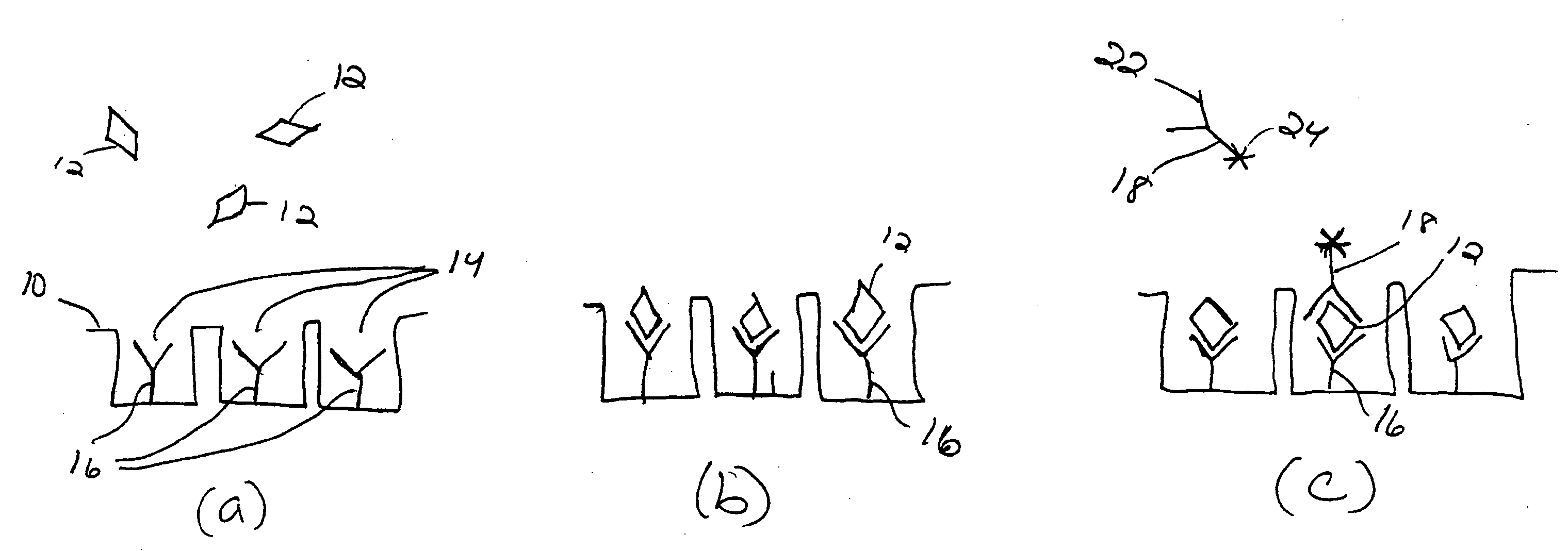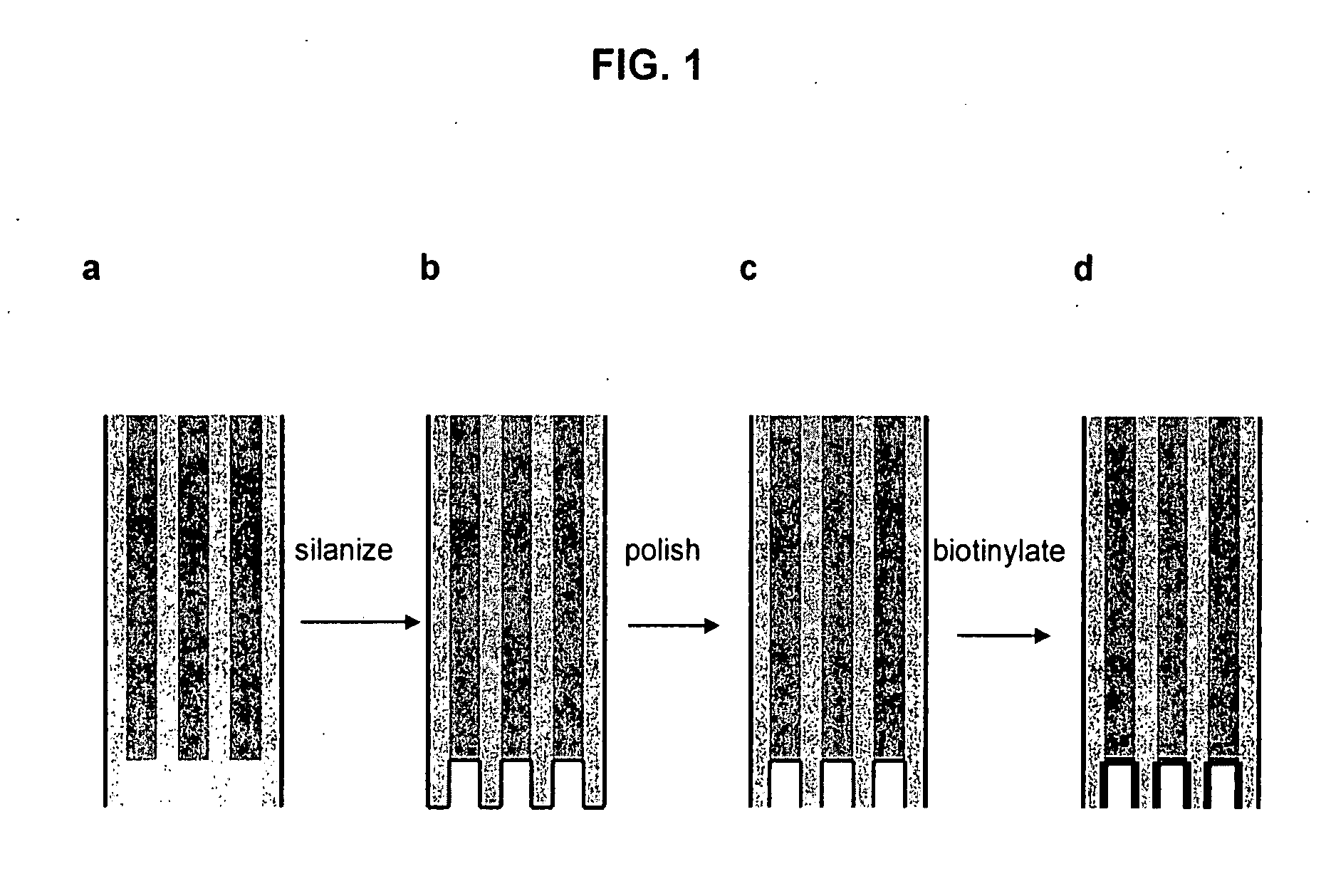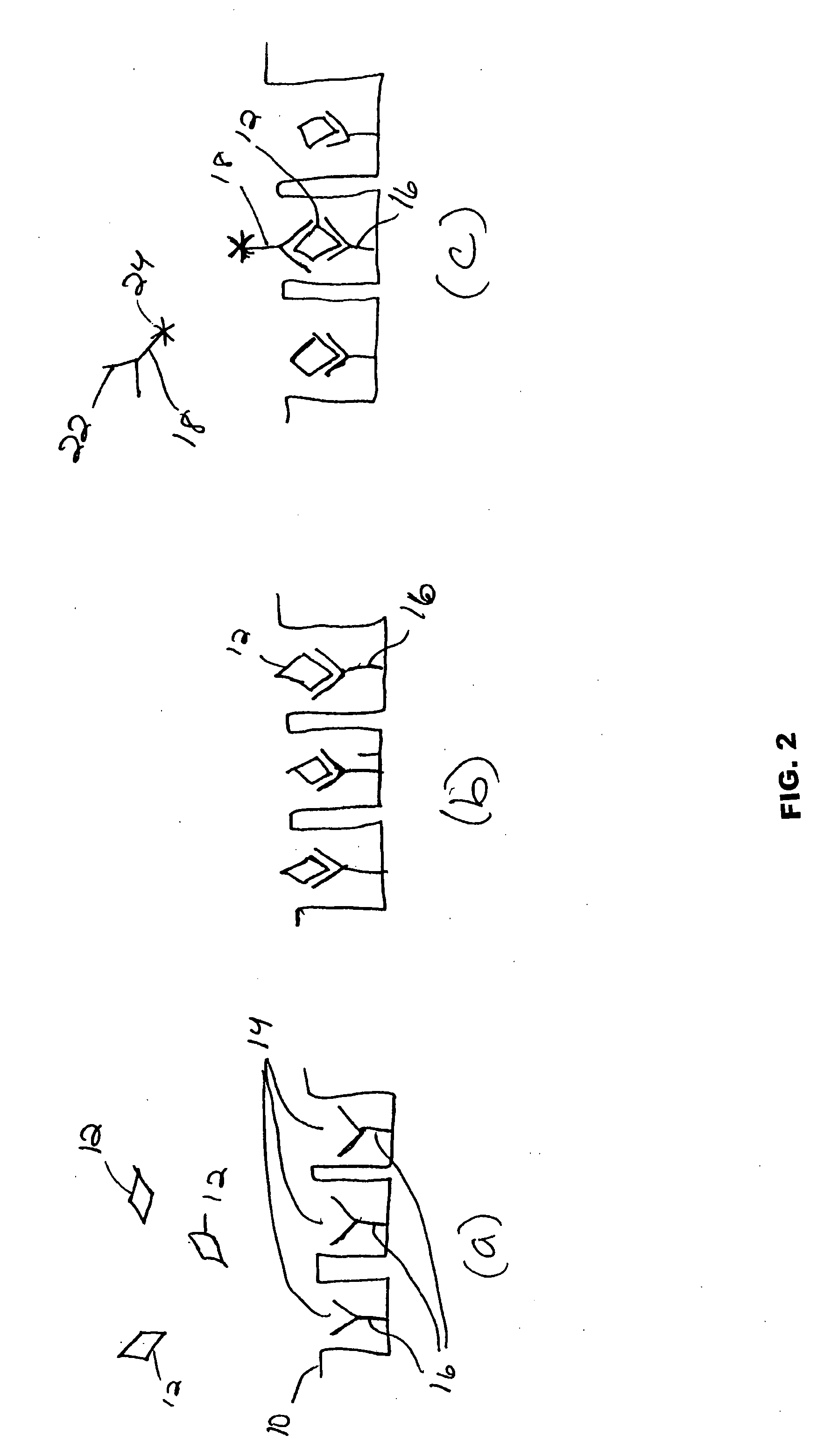Methods and arrays for target analyte detection and determination of target analyte concentration in solution
a technology of target analyte and target analyte, which is applied in the field of methods and arrays for detecting target analyte concentration in solution, can solve the problems of false positive signal generation, additional equipment, and materials, and require additional amplification steps and thus additional time, equipment and materials
- Summary
- Abstract
- Description
- Claims
- Application Information
AI Technical Summary
Problems solved by technology
Method used
Image
Examples
example 1
[0124] In this example, a proof-of-concept binding assay is performed using enzymatic signal amplification in an array of femtoliter sized reaction vessels. More specifically, various assays are performed to detect varying amounts of streptavidin-β-galactosidase (SβG) in solution using a biotinylated array of the present invention and then the correlation between the number of wells with captured SβG molecules and the concentration of the SβG in the sample is examined.
[0125] In this example, an etched fiber optic array is used to create a collection of femtoliter sized reaction vessels, each specifically functionalized and capable of capturing enzyme-labeled target molecules. Single enzyme molecules are confined to individual reaction vessels and catalyze the production of a sufficient number of fluorescent product molecules to generate a positive signal. At low target molecule concentrations, only a percentage of the capture sites bind a target molecule, enabling a binary readout ...
example 2
[0136] In this example, single molecules of β-galactosidase were monitored using a 1 mm diameter fiber optic bundle with over 2.0×105 individually sealed, femtoliter microwell reactors. By observing the buildup of fluorescent products from single enzyme molecule catalysis over the array of reaction vessels and by applying a Poisson statistical analysis, a digital concentration readout was obtained.
Materials
[0137] 1 mm bundled 4.5 μm optical fibers were purchased from Illumina (San Diego, Calif.). β-galactosidase and Ru(bpy)3Cl2 was obtained from Sigma-Aldrich (St. Louis, Mo.). Resorufin-D-β-galactopyranoside was purchased from Molecular Probes (Eugene, Oreg.). 0.01-inch non-reinforced gloss silicone sheeting material was purchased from Specialty Manufacturing Inc. (Saginaw, Mich.). All other chemicals used were of reagent grade and obtained from Sigma-Aldrich (St. Louis, Mo.).
[0138] A custom-built, upright epifluorescence imaging system acquired all fluorescence images using a m...
PUM
| Property | Measurement | Unit |
|---|---|---|
| Volume | aaaaa | aaaaa |
| Volume | aaaaa | aaaaa |
| Volume | aaaaa | aaaaa |
Abstract
Description
Claims
Application Information
 Login to View More
Login to View More - R&D
- Intellectual Property
- Life Sciences
- Materials
- Tech Scout
- Unparalleled Data Quality
- Higher Quality Content
- 60% Fewer Hallucinations
Browse by: Latest US Patents, China's latest patents, Technical Efficacy Thesaurus, Application Domain, Technology Topic, Popular Technical Reports.
© 2025 PatSnap. All rights reserved.Legal|Privacy policy|Modern Slavery Act Transparency Statement|Sitemap|About US| Contact US: help@patsnap.com



